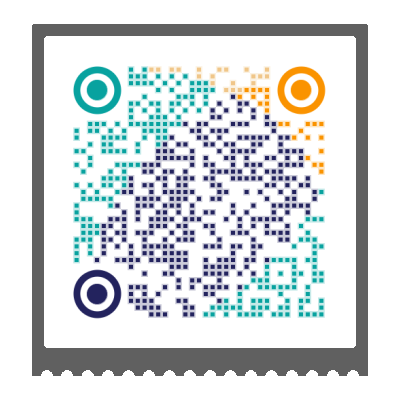使用Gradio构建交互式Web应用
这是一个关于如何使用 Gradio 构建 Web 应用程序的开源系列教程。你将从设置 Python 环境开始,学习文本、图像等各类输入组件,自定义界面,设计复杂的交互等。本课程还将涵盖使用 Gradio 和 GDAL 处理遥感数据,用于图像增强、地理坐标转换、坡度分析等任务;学习如何使用 Gradio 和 Foliumap 创建交互式地图,实现动态地理空间数据可视化;如何集成机器学习模型并在 Hugging Face Spaces 上发布 web 应用程序。本教程包括实例、演示和作业。完成本教程后,你将能够高效地构建、部署和共享交互式 Web 应用程序。 课程相关配套请在文末获取。
Part5 :使用Gradio构建交互式地图应用
DEMO 5-1: 交互地图框架构建与坐标定位
将坐标范围或影像显示在地图中是遥感处理的常规操作。Gradio中虽然没有直接提供相应的控件,但可以借助Leafmap中的Folium等实现交互式地图的构建.本案例中主要呈现含有在线影像的底图框架的构建以及坐标的定位。
- Leafmap (leafmap.org) 是一个专为交互式地理空间分析和可视化设计的Python库,由吴秋生老师创建。它整合了多个流行工具(如 Folium、ipyleaflet 和 Google Earth Engine),简化了地理数据处理和地图创建的流程。
- 地图框架 能够实现在Gradio中呈现动态地图的关键在于,通过leafmap的to_gradio函数将地图转为Gradio可接收的Html格式,从而实现地图框架的构建。
import gradio as gr
import leafmap.foliumap as leafmap
# 定义一个根据参数生成地图的函数
def generate_map(zoom_level, maptype="Esri.WorldStreetMap", coordsy='', coordsx=''):
if coordsy == '' and coordsx == '':
coordsy = 40 # 默认纬度坐标
coordsx = 116.3 # 默认经度坐标
print(maptype)
# 使用leafmap创建地图对象,指定中心点和缩放级别
map = leafmap.Map(location=(coordsy, coordsx), zoom=zoom_level)
map.add_basemap(maptype) # 添加指定的底图类型
return map.to_gradio() # 返回HTML格式的地图
# 创建Gradio界面
with gr.Blocks() as demo:
# 顶部标题
gr.HTML("""
<center>
<h1> General a map 🗺️ </h1>
<b> jason.yu.mail@qq.com 📧<b>
</center>
""")
with gr.Row():
with gr.Row():
# 经纬度输入框
coordinates_input_y = gr.Textbox(value='',placeholder=40,label="中心点纬度",lines=1)
coordinates_input_x = gr.Textbox(value='',placeholder=116.3,label="中心点经度",lines=1)
# 缩放级别滑块
zoom_level_input = gr.Slider(value=9,minimum=4,maximum=15,step=1,label="选择缩放级别",interactive=True)
with gr.Row():
# 底图类型下拉菜单
maptype=gr.Dropdown(
choices=[
"Esri.NatGeoWorldMap",
"Esri.WorldGrayCanvas",
"Esri.WorldImagery",
"Esri.WorldShadedRelief",
"Esri.WorldStreetMap",
"Esri.WorldTerrain",
"Esri.WorldTopoMap",
],value="Esri.WorldStreetMap",interactive=True,label="底图类型")
# 生成地图按钮
map_button = gr.Button("生成地图",scale=1)
with gr.Row():
# 地图输出区域
map_output = gr.HTML()
# 按钮点击事件绑定
map_button.click(generate_map, inputs=[zoom_level_input,maptype,coordinates_input_y,coordinates_input_x], outputs=[map_output])
# 启动多线程处理模式
demo.queue().launch()
# infile='iputfile'
# path='https://github.com/JunchuanYu/Gradio_tutorial/blob/main/data/raster.tif'
DEMO 5-2: Tiff文件的云端可视化
栅格数据的类型是多样的,由于Gradio构建的交互式应用是依托Web构建的,因此Tiff需要转为栅格切片服务才能正确的呈现在地图中。本案例中以保存在项目目录下的“input.tif”和保存在网络的“https://github.com/JunchuanYu/Gradio_tutorial/blob/main/data/raster.tif”的可视化为例进行说明。
- 在线底图 Folium中支持在线地图瓦片的加载,除了esri、arcgis、google之外也支持天地图等国产数据。
- 本地Tiff 其可视化过程是将Tiff转为本地的瓦片图层再叠加到底图中。
- 云端Tiff 本案例中的云端Tiff是先下载到本地后再进行可视化的,此外,可以采用add_remote_tile 函数用于加载 Cloud Optimized GeoTIFF (COG) 格式的远程 TIFF 文件直接加载。
import gradio as gr
import leafmap.foliumap as leafmap
# 定义一个函数,用于在leafmap中加载Tiff文件
def showtiff(text1, text2):
infile = str(text1) # 转换为字符串格式
filepath = str(text2) # 转换为字符串格式
# 创建地图对象
Map = leafmap.Map()
# 添加默认底图
Map.add_tile_layer(
infile='https://server.arcgisonline.com/ArcGIS/rest/services/World_Imagery/MapServer/tile/{z}/{y}/{x}',
name='arcgisonline',
attribution='attribution'
)
# 如果infile不为空,则添加瓦片图层
if infile != '':
Map.add_raster(infile)
# 如果文件路径不为空,则下载并添加Tiff文件
if filepath != '':
raster = "raster.tif"
raster = leafmap.download_file(filepath, "raster.tif")
Map.add_raster(raster, layer_name='insar')
return Map.to_gradio()
# 创建Gradio界面
with gr.Blocks(theme='gradio/soft') as demo:
# 页面标题
gr.HTML("""
<center>
<h1> 使用foliumap处理地图数据 🗺️ </h1>
<b> jason.yu.mail@qq.com 📧<b>
</center>
""")
# 输入行
with gr.Row():
input = gr.Textbox(label='输入本地Tiff文件名', interactive=True)
input2 = gr.Textbox(label='输入Tiff文件URL', interactive=True)
# 输出行
with gr.Row():
out = gr.HTML()
# 绑定事件处理
input.change(showtiff, inputs=[input, input2], outputs=out)
input2.change(showtiff, inputs=[input, input2], outputs=out)
# 启动应用
demo.launch(debug=True)
请关注微信公众号【45度科研人】回复“@gradio”获取该教程配套数据,欢迎后台留言!
